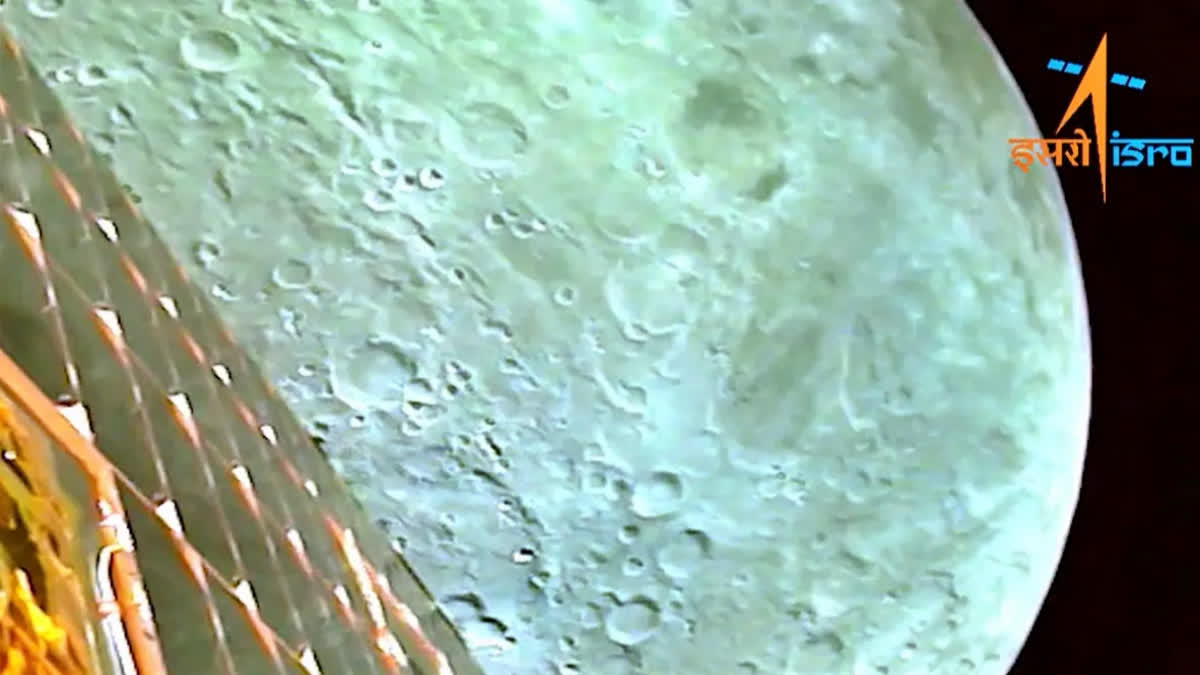Bengaluru: The Indian Space Research Organisation (ISRO) on Sunday released a video of the Moon 'as viewed by Chandrayaan-3' a day after the mission entered the lunar orbit.
The space agency posted the video with caption "Chandrayaan-3 Mission: The Moon, as viewed by Chandrayaan-3 during Lunar Orbit Insertion" on Twitter. The video showed the Moon in bluish-green colour with many craters. The video was released hours before the second major manoeuvre which is to take place on late Sunday night.
-
The Moon, as viewed by #Chandrayaan3 spacecraft during Lunar Orbit Insertion (LOI) on August 5, 2023.#ISRO pic.twitter.com/xQtVyLTu0c
— LVM3-M4/CHANDRAYAAN-3 MISSION (@chandrayaan_3) August 6, 2023 " class="align-text-top noRightClick twitterSection" data="
">The Moon, as viewed by #Chandrayaan3 spacecraft during Lunar Orbit Insertion (LOI) on August 5, 2023.#ISRO pic.twitter.com/xQtVyLTu0c
— LVM3-M4/CHANDRAYAAN-3 MISSION (@chandrayaan_3) August 6, 2023The Moon, as viewed by #Chandrayaan3 spacecraft during Lunar Orbit Insertion (LOI) on August 5, 2023.#ISRO pic.twitter.com/xQtVyLTu0c
— LVM3-M4/CHANDRAYAAN-3 MISSION (@chandrayaan_3) August 6, 2023
The spacecraft will continue to orbit the Moon for a few days to further adjust its trajectory and get closer to the Moon’s surface, namely the 100-km circular orbit above the Moon’s surface. This ensures a proper landing for the spacecraft by carefully positioning itself before touching down on the lunar surface.
August 17 is the next big day when ISRO separates the landing module from the propulsion module. The landing module, Vikram, carries the rover Pragyaan. Vikram will then aim to land safely on the Moon’s surface on August 23. This part of the operation is critical as it allows the landing module to navigate independently and make a precise landing on the Moon.
Approximately four hours after a successful soft landing, rover Pragyaan is scheduled to detach from lander Vikram. Both Vikram and Pragyaan will then conduct in situ experiments on the Moon’s surface. In-situ experiments refer to tests and analyses being carried out directly on the Moon’s surface without the need for bringing back samples to Earth.
These experiments will provide valuable data and insights regarding the lunar environment, composition and other scientific measurements, helping expand our understanding of the Moon and its potential for future exploration. The propulsion module, with its array of scientific instruments, will continue orbiting the Moon. This means that, after Vikram successfully touches down and Pragyaan is deployed, the propulsion module will keep orbiting the Moon instead of landing on the lunar surface.
By staying in orbit, the propulsion module will keep gathering valuable data and conducting scientific tests. This will make a comprehensive exploration of the Moon’s environment possible and enable further study of the Moon’s gravitational field and mapping of the lunar surface, besides carrying out other scientific measurements. This data will help us understand the Moon’s geological composition, its evolution and help future missions and explorations by humans.
Also read: Chandrayaan-3 enters lunar orbit: What happens next



